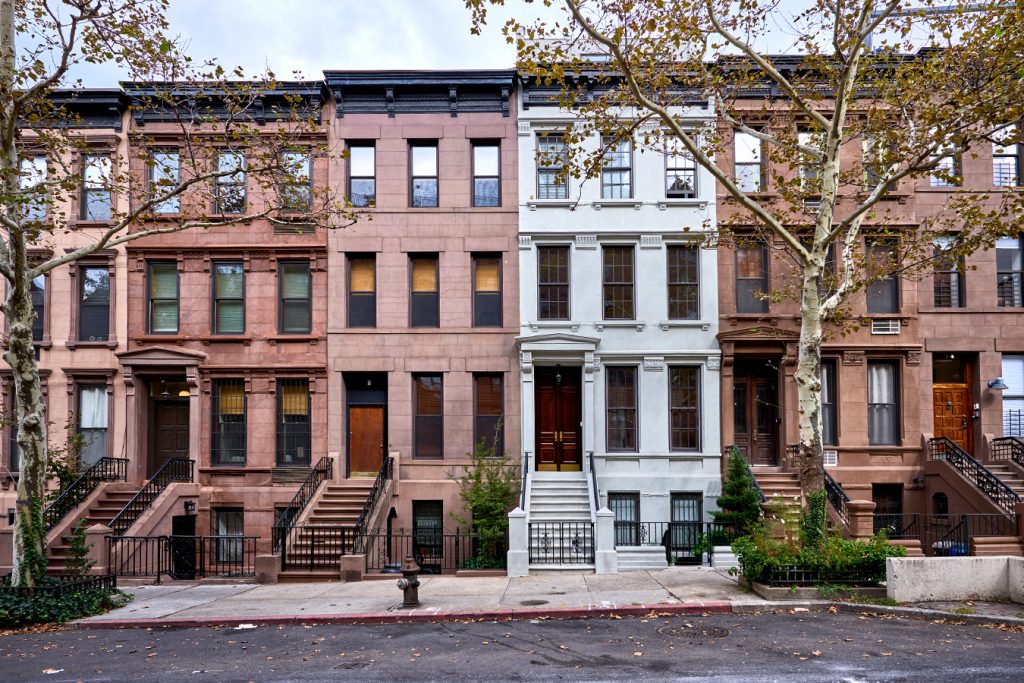
Key Considerations for Buying a New York City Townhouse
Corcoran agent Sephrah Towbin and architect Eugene Colberg weigh in on what it takes to buy and renovate a brownstone in today’s market, along with critical insights from 25+ years selling and revitalizing these unique homes.
Nothing says “New York cool” like living in the perfect townhouse—and in today’s environment, where privacy and space have reached critical importance, interest in these properties has reached a fever pitch. According to Corcoran’s 2020 Manhattan Townhouse Report, 59 percent of all Manhattan closings over $5 million in 2020 were for townhouses, which comprised 11.5 percent of luxury sales in 2019; while the company’s Brooklyn Townhouse Report showed that multi-family homes fell 25% year-over-year, but single-family townhouse sales rose 10%, representing the first year-over-year increase since 2017.
While townhome sales are strong, and they offer homebuyers unparalleled benefits over a typical apartment, they can often be complicated purchases—the majority of New York’s townhomes are around 100-125 years old, and may be situated in landmark districts—so buyers need to be mindful of the realities and action steps needed to create that dream brownstone or rowhouse home.
The very first step for a townhome buyer is to figure out how much money is available for the purchase, and how much they have access to. Being prepared means starting with a well-connected agent, getting the team together—including the architect, lender, inspector, contractor and attorney—and only then is the buyer ready to go shopping. The right home is subjective and often gone by the time the buyer finds it, which is why doing the work from the beginning allows them to be prepared and make a faster decision.

59% of all Manhattan closings over $5 million in 2020 were for townhouses; they comprised 11.5% of the borough’s luxury sales in 2019.
In Brooklyn, single-family townhouse sales rose 10% in 2020—the first YOY increase since 2017.
“Even though it’s a heated market,
there will be opportunities.”
Sephrah Towbin — Corcoran’s Park Slope (Union) Office
Don’t expect a “deal.”
In today’s market, there are no deals. If the buyer is knowledgeable and prepared, there will be opportunities you can take advantage of. This is not dime store real estate. The most valuable styles of brownstones are the ones in the best condition. The way a buyer is going to get as close as possible to a deal is to surround themselves with experts, to help make the right decision at the right time.
For most townhome buyers, this is their first and only time they are doing this in their life. Understandably, they might not know the pitfalls and upsides to this purchase—the more information we give them, they can make an informed decision, as we want someone to be happy in their home.
Simply put, even though it’s a heated market, there will be opportunities—the buyers must remain patient.
Identify target neighborhoods.
The first brownstones in Brooklyn were built near the original trolley located on Fulton Street in Downtown Brooklyn—this radius is where you find the quintessential brownstone-type buildings, including Brooklyn Heights, Carroll Gardens, and Park Slope. These are also some of the priciest neighborhoods. For more affordable options, check out South Slope, Greenwood, Greenwood Heights, Windsor Terrace, and Kensington. In North Brooklyn, consider East Williamsburg, Crown Heights, Bushwick, and Bed-Stuy’s hidden gems as well.
Bring your architect.
Even the listing will say it—“Bring your architect!” When considering purchasing a townhouse, it’s imperative to bring an architect to the viewing in order to give immediate, valuable insights on the property’s potential, and any pitfalls or serious issues to be aware of.
From an architectural perspective, the structure must be evaluated first, along with other key building features including the condition of the exterior walls, foundations, roof, windows, stairs, and other visible critical attributes.
Enlist the help of home inspectors and engineers that can speak to the condition of the building systems, for example, if there are signs of water infiltration, or the electric system hasn’t been redone in the past 50 years. Inspections should uncover the age and condition of the building systems, including electrical, gas, plumbing, and heating.
Recently, in renovating the top floor of a structure in Carroll Gardens, we saw an old gas light—and its historic gas piping dating to the 19th century. This kind of discovery always makes us smile, reminding us of the people who once lived here—and a reminder of the important work that needs to be done to modernize these beautiful buildings.
One common issue we regularly see, especially in Brooklyn for houses or structures that have been around 100+ years, is the lack of a Certificate of Occupancy. From a legal perspective, how can the purchaser manage the risk of this noncompliant condition? While we always encourage them to speak with their attorney, purchasers should know this risk is both common and manageable. The architect can also advise what are the different steps of attaining a new Certificate of Occupancy for the structure.
Don’t worry if it’s not a “perfect brownstone.”
People will pass over a home they think is “ugly,” but keep in mind there are many effective ways to spruce it up. The buyer’s offer can then come in at a lower price. They can choose how and when to renovate, and have the funds to take care of both the purchase and renovation phases.
When it comes to renovating a structure in New York, there are different types of permits. They revolve around the certificate of occupancy and if it needs to be altered. This first type of permit is for minor renovations, such as removing or adding partitions, renovating or relocating bathrooms or kitchens, or adding a deck. This type of work will not affect the certificate of occupancy. The second type of permit is a more involved type of filing such as changing the home’s family composition, or making an addition to the house. Enlist the help of an architect with significant experience in these types of filings to allow work to proceed quickly and efficiently.
In terms of design, people today want bigger bedrooms, a more “open” home that still allows for privacy, and a greater connection between their interior and exterior backyard. The wonderful thing about renovations is that a buyer can create the home layout of their choice, and prepare for life events 5-10 years down the road. If you have a growing family, or are preparing for parents to move in, renovations can make this all possible.
Buying and renovating?
Like any other project, start by defining your goals, budget, and timeline right from the start. What are the must haves vs. the nice-to-haves?
Keep in mind that a homebuyer also becomes a steward of the structure for the timeline that they own it. Working with experts can help ensure that that however the property is being touched is respectful and contextual to the neighborhood. Depending on the amount of work needed for a building, once the budget and objectives are set, the buyer’s team can get started, manage challenges that may arise, and ensure an optimal result. The key to a successful brownstone home purchase is to enlist the help of experts and follow your instincts when you find something you love.




